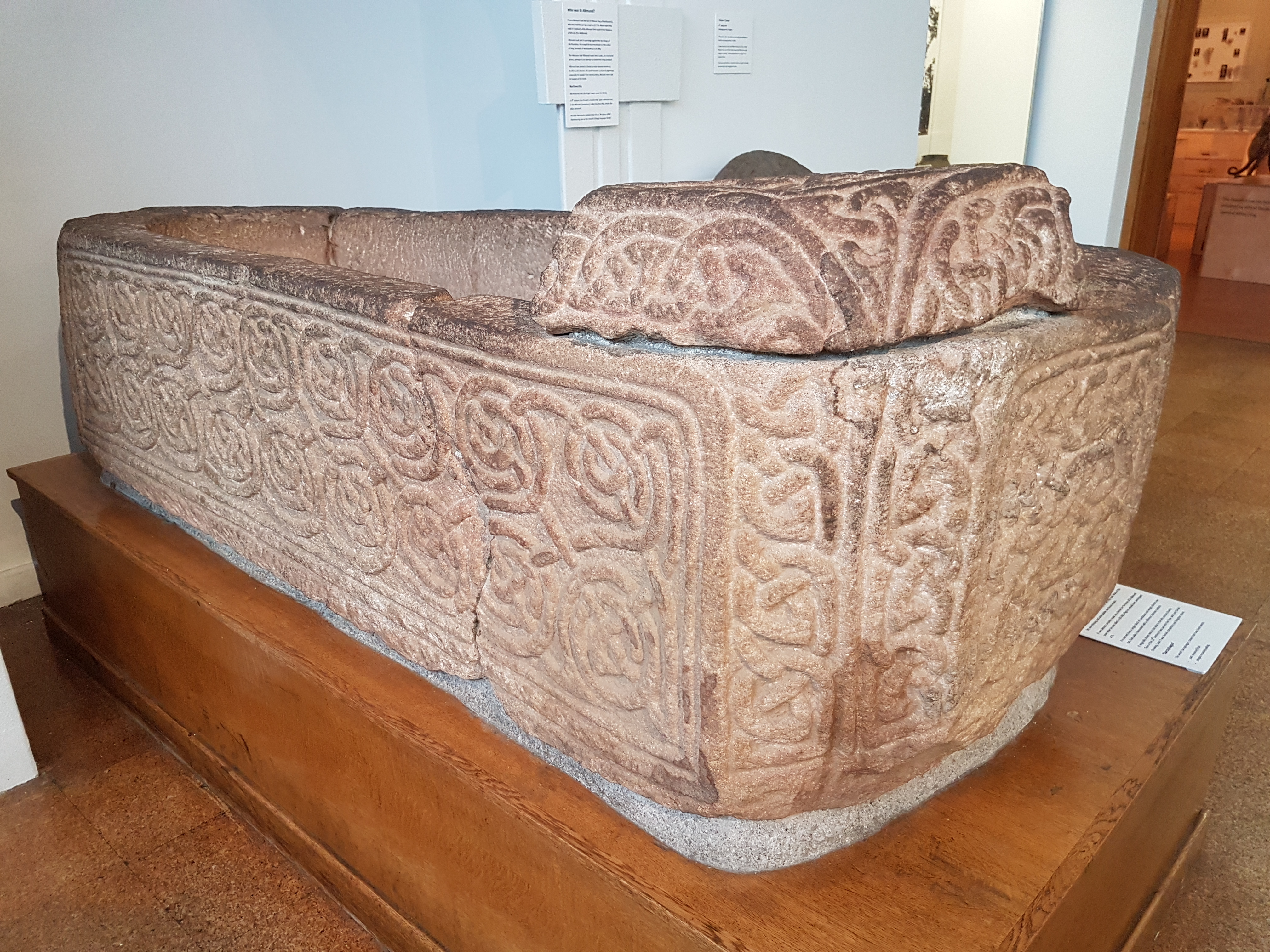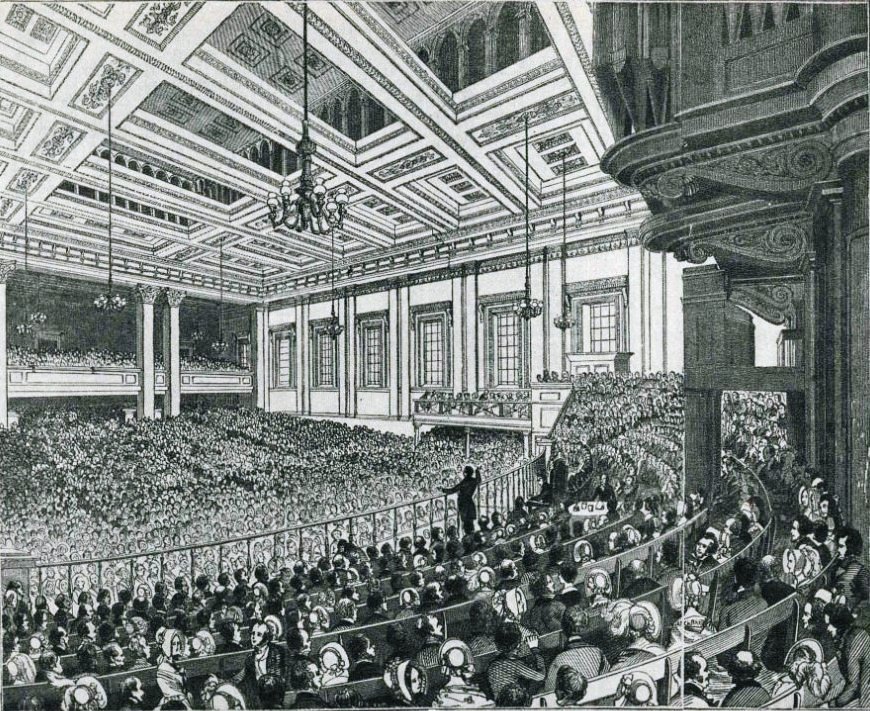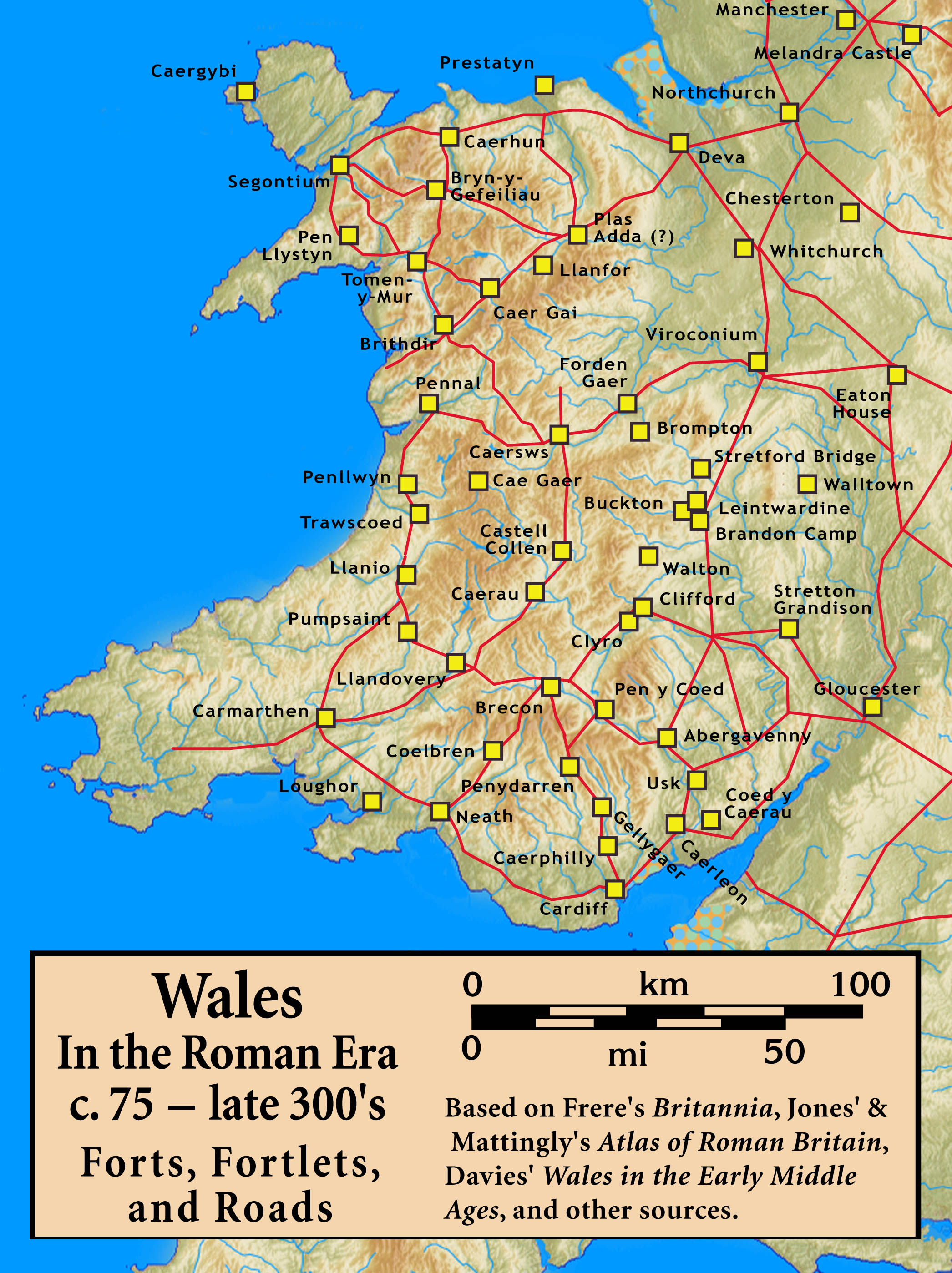|
Dylife Lead Mine
Dylife is a former mining settlement in Powys, Wales, located at the head of Afon Twymyn in the Cambrian Mountains, one mile west of the road between Llanidloes and Llanbrynmair ( B4518). It is in the historic county of Montgomeryshire. The nearby lead mines intermittently sustained mining communities from Roman times until the early 20th century. During the late 19th century, as mining declined after the 1860s so did Dylife's population. The remaining buildings are two former chapels converted into homes and the Star Inn. Mining Lead mining around Dylife took place in Roman times (there is a Roman fort on nearby Penycrocbren) and recommenced in the 17th century on a small scale until the early 19th century. In 1809, the two managers, Hugh Williams and John Pughe, started to negotiate for the lease which they obtained in 1815. The two men operated the mines until the 1850s, although not harmoniously. The mines were expanded with new shafts and machinery was brought in to as ... [...More Info...] [...Related Items...] OR: [Wikipedia] [Google] [Baidu] |
Llanbrynmair
Llanbrynmair or Llanbryn-mair () is a village, Community (Wales), community and electoral ward in Montgomeryshire, Powys, Wales on the A470 road between Caersws and Machynlleth. In 2011, it had a population of 920. Description The community includes several hamlets: Talerddig, Dolfach, Bont-Dolgadfan, Pandy (Powys), Pandy, Cringoed, Dylife and Pennant, Powys, Pennant. The original centre is at Llan, Powys, Llan, on the road to Llanidloes, where the local parish church of St Mary is located. The current centre (formerly called "Wynnstay") at the junction of the A470 and B4518 road, B4518 rose to local prominence with the building of the new turnpike road in 1821 and the arrival of the railway line between Newtown, Powys, Newtown and Machynlleth in 1861. Geographically, the community includes the valleys of three rivers – Afon Twymyn, Afon Iaen and Afon Rhiw Saeson – and the surrounding uplands. The three rivers join around the main village and flow westwards as the Afon Twymy ... [...More Info...] [...Related Items...] OR: [Wikipedia] [Google] [Baidu] |
Mining
Mining is the Resource extraction, extraction of valuable geological materials and minerals from the surface of the Earth. Mining is required to obtain most materials that cannot be grown through agriculture, agricultural processes, or feasibly created Chemical synthesis, artificially in a laboratory or factory. Ores recovered by mining include Metal#Extraction, metals, coal, oil shale, gemstones, limestone, chalk mining, chalk, dimension stone, rock salt, potash, gravel, and clay. The ore must be a rock or mineral that contains valuable constituent, can be extracted or mined and sold for profit. Mining in a wider sense includes extraction of any non-renewable resource such as petroleum, natural gas, or even fossil water, water. Modern mining processes involve prospecting for ore bodies, analysis of the profit potential of a proposed mine, extraction of the desired materials, and final mine reclamation, reclamation or restoration of the land after the mine is closed. Mining ma ... [...More Info...] [...Related Items...] OR: [Wikipedia] [Google] [Baidu] |
Villages In Powys
A village is a human settlement or community, larger than a hamlet but smaller than a town with a population typically ranging from a few hundred to a few thousand. Although villages are often located in rural areas, the term urban village is also applied to certain urban neighborhoods. Villages are normally permanent, with fixed dwellings; however, transient villages can occur. Further, the dwellings of a village are fairly close to one another, not scattered broadly over the landscape, as a dispersed settlement. In the past, villages were a usual form of community for societies that practice subsistence agriculture and also for some non-agricultural societies. In Great Britain, a hamlet earned the right to be called a village when it built a church.-4; we might wonder whether there's a point at which it's appropriate to talk of the beginnings of French, that is, when it wa ... ''village'', from Latin ''villāticus'', ultimately from Latin ''villa'' (English ''villa''). ... [...More Info...] [...Related Items...] OR: [Wikipedia] [Google] [Baidu] |
Smith (metalwork)
A metalsmith or simply smith is a craftsperson fashioning useful items (for example, tools, kitchenware, tableware, jewelry, armor and weapons) out of various metals. Smithing is one of the oldest metalworking occupations. Shaping metal with a hammer (forging) is the archetypical component of smithing. Often the hammering is done while the metal is hot, having been heated in a forge. Smithing can also involve the other aspects of metalworking, such as refining metals from their ores (traditionally done by smelting), casting it into shapes ( founding), and filing to shape and size. The prevalence of metalworking in the culture of recent centuries has led '' Smith'' and its equivalents in various languages to be a common occupational surname (German Schmidt or Schmied, Portuguese Ferreiro, Ferreira, French Lefèvre, Spanish Herrero, Italian Fabbri, Ferrari, Ferrero, Ukrainian Koval etc.). As a suffix, ''-smith'' connotes the meaning of a specialized craftsperson—for ... [...More Info...] [...Related Items...] OR: [Wikipedia] [Google] [Baidu] |
Shrewsbury
Shrewsbury ( , ) is a market town and civil parish in Shropshire (district), Shropshire, England. It is sited on the River Severn, northwest of Wolverhampton, west of Telford, southeast of Wrexham and north of Hereford. At the 2021 United Kingdom census, 2021 census, the parish had a population of 76,782. It is the county town of the ceremonial county of Shropshire. Shrewsbury has Anglo-Saxons, Anglo-Saxon roots and institutions whose foundations, dating from that time, represent a cultural continuity possibly going back as far as the 8th century. The centre has a largely undisturbed medieval street plan and over 660 Listed buildings in Shrewsbury, listed buildings, including several examples of timber framing from the 15th and 16th centuries. Shrewsbury Castle, a red sandstone fortification, and Shrewsbury Abbey, were founded in 1074 and 1083 respectively by the Normans, Norman Earl of Shrewsbury, Roger de Montgomery. The town is the birthplace of Charles Darwin. It has ... [...More Info...] [...Related Items...] OR: [Wikipedia] [Google] [Baidu] |
Aberystwyth
Aberystwyth (; ) is a University town, university and seaside town and a community (Wales), community in Ceredigion, Wales. It is the largest town in Ceredigion and from Aberaeron, the county's other administrative centre. In 2021, the population of the town was 14,640. Located in the Historic counties of Wales, historic county of Cardiganshire, means "the mouth of the River Ystwyth, Ystwyth". It has been a major educational location in Wales since the establishment of University College Wales, now Aberystwyth University, in 1872. The town is situated on Cardigan Bay on the west coast of Wales, near the confluence of the River Ystwyth and Afon Rheidol. Following the reconstruction of the harbour, the Ystwyth skirts the town. The Rheidol passes through the town. The seafront, with a Royal Pier, Aberystwyth, pier, stretches from Constitution Hill, Aberystwyth, Constitution Hill at the north end of the Promenade to the harbour at the south. The beach is divided by the castle. T ... [...More Info...] [...Related Items...] OR: [Wikipedia] [Google] [Baidu] |
John Bright
John Bright (16 November 1811 – 27 March 1889) was a British Radical and Liberal statesman, one of the greatest orators of his generation and a promoter of free trade policies. A Quaker, Bright is most famous for battling the Corn Laws. In partnership with Richard Cobden, he founded the Anti–Corn Law League, aimed at abolishing the Corn Laws, which raised food prices and protected landowners' interests by levying taxes on imported wheat. The Corn Laws were repealed in 1846. Bright also worked with Cobden in another free trade initiative, the Cobden–Chevalier Treaty of 1860, promoting closer interdependence between Great Britain and the Second French Empire. This campaign was conducted in collaboration with French economist Michel Chevalier, and succeeded despite Parliament's endemic mistrust of the French. Bright sat in the House of Commons from 1843 to 1889, promoting free trade, electoral reform and religious freedom. He was almost a lone voice in opposing the ... [...More Info...] [...Related Items...] OR: [Wikipedia] [Google] [Baidu] |
Richard Cobden
Richard Cobden (3 June 1804 – 2 April 1865) was an English Radicals (UK), Radical and Liberal Party (UK), Liberal politician, manufacturing, manufacturer, and a campaigner for free trade and peace. He was associated with the Anti–Corn Law League and the Cobden–Chevalier Treaty. As a young man, Cobden was a successful commercial traveller who became co-owner of a highly profitable calico printing factory in Sabden but lived in Manchester, a city with which he would become strongly identified. However, he soon found himself more engaged in politics, and his travels convinced him of the virtues of free trade (anti-protection) as the key to better international relations. In 1838, he and John Bright founded the Anti–Corn Law League, aimed at abolishing the unpopular Corn Laws, which protected landowners' interests by levying taxes on imported wheat, thus raising the price of bread. As a Member of Parliament of the United Kingdom, Parliament from 1841, he fought against oppo ... [...More Info...] [...Related Items...] OR: [Wikipedia] [Google] [Baidu] |
Afon Dyfi
The River Dyfi (; ), also known as the River Dovey ( ), is an approximately long river in Wales. Its large estuary forms the boundary between the counties of Gwynedd and Ceredigion, and its lower reaches have historically been considered the border between North Wales and South Wales. Name Nowadays the Welsh spelling ''Dyfi'' is widely used locally and by the Welsh Government, Natural Resources Wales and the BBC. The anglicised spelling ''Dovey'' continues to be used by some entities. Sources The River Dyfi rises in the small lake Creiglyn Dyfi at about above sea level, below Aran Fawddwy, flowing south to Dinas Mawddwy and Cemmaes Road (), then south west past Machynlleth to Cardigan Bay () at Aberdyfi. It shares its watershed with the River Severn () and the River Dee () before flowing generally south-westwards down to a wide estuary. The only large town on its route is Machynlleth. The river is prone to flooding and some roads in the lower catchment can become impassa ... [...More Info...] [...Related Items...] OR: [Wikipedia] [Google] [Baidu] |
Derwenlas
Derwenlas is a hamlet (place), hamlet in northern Powys, Wales. It is part of the Community (Wales), community of Cadfarch. Part of the historic county of Montgomeryshire (Sir Drefaldwyn) from 1536 to 1974, it lies on the River Dyfi and was once a port serving the market town of Machynlleth. Derwenlas lies on the A487 trunk road from Machynlleth to Aberystwyth. History Between 1797 and 1812 a road was built from Machynlleth to Garreg near Glandyfi, passing through Derwenlas. This new transportation route enabled Derwenlas to develop as a port as it was the highest point on the Dyfi that was navigable by coastal ships - boats of up to 70 tons could reach there at high tide. A wide variety of goods were shipped into and out of the port. Incoming goods included gunpowder to be stored in Morben Quarry, lime and coal for the limekilns at Pentre Cilyn, rye, wheat and hides. Outgoing goods included slate and lead from local mines, timber, bark and corn. From 1830, traffic at the por ... [...More Info...] [...Related Items...] OR: [Wikipedia] [Google] [Baidu] |
Waterwheel
A water wheel is a machine for converting the kinetic energy of flowing or falling water into useful forms of power, often in a watermill. A water wheel consists of a large wheel (usually constructed from wood or metal), with numerous blades or buckets attached to the outer rim forming the drive mechanism. Water wheels were still in commercial use well into the 20th century, although they are no longer in common use today. Water wheels are used for milling flour in gristmills, grinding wood into pulp for papermaking, hammering wrought iron, machining, ore crushing and pounding fibre for use in the manufacture of cloth. Some water wheels are fed by water from a mill pond, which is formed when a flowing stream is dammed. A channel for the water flowing to or from a water wheel is called a mill race. The race bringing water from the mill pond to the water wheel is a headrace; the one carrying water after it has left the wheel is commonly referred to as a tailrace. Waterwheel ... [...More Info...] [...Related Items...] OR: [Wikipedia] [Google] [Baidu] |
Roman Wales
The Roman era in the area of modern Wales began in 48 AD, with a military invasion by the imperial governor of Roman Britain. The conquest was completed by 78 AD, and Roman rule endured until the region was abandoned in 383 AD. The Roman Empire held a military occupation in most of Wales, except for the southern coastal region of South Wales, east of the Gower Peninsula, where there is a legacy of Romanisation in the region, and some southern sites such as Carmarthen, which was the civitas capital of the Demetae tribe. The only town in Wales founded by the Romans, Caerwent, is in South Wales. Wales was a rich source of mineral wealth, and the Romans used their engineering technology to extract large amounts of gold, copper, and lead, as well as modest amounts of some other metals such as zinc and silver. The Roman campaigns of conquest in Wales are documented in surviving ancient sources, which record in particular the resistance and ultimate conquest of two of the five ... [...More Info...] [...Related Items...] OR: [Wikipedia] [Google] [Baidu] |







